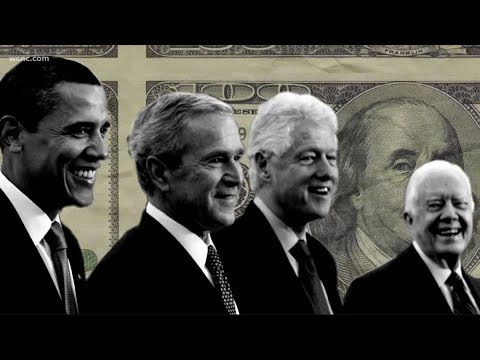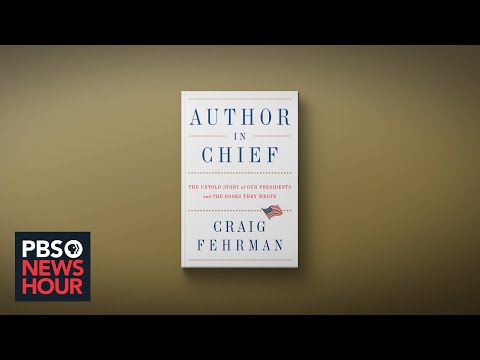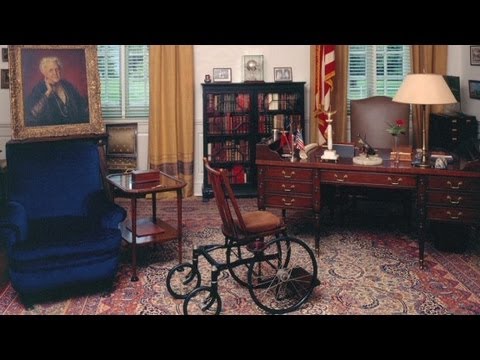The office is so relentlessly demanding that its toll in aging its occupants is a meme at this point. Some historians say American leaders age two years for every one they serve in the White House. Barack Obama famously entered the office young and vibrant in January 2009. Eight years later, the stresses of the job had radically grayed his hair. But what happens after it’s all over? Do ex-leaders finally let their hair down (sorry, Barack, no pun intended) and relax? Or does the fast pace continue? This list is all about what daily life is like for former U.S. presidents after they leave office.
10 Wind Down And Chill Out (If You Can)
There’s rarely an hour where the president isn’t doing something. Conference calls, meetings with world leaders, strategy sessions with advisors, and national media needs rule the day. Aside from sleep, there isn’t much downtime on the job. So when it ends, and the new guy gets inaugurated, the comedown is intense. After Barack Obama left office in January 2017, he woke up on his first free day and promptly floundered. “I slept in, which I was pretty happy about,” he recalled later to David Letterman. “I sort of enjoyed puttering around the house, finding out, ‘does the coffee maker work,’ and fighting with Michelle for closet space.” After his service, Bill Clinton experienced a similar situation. Following a long run as Arkansas’ governor and then eight years in the White House, Clinton was shocked to learn breakfast wasn’t ready when he woke up. Suddenly on his own without White House staff around, Clinton had to start cooking for himself once again. He struggled with the coffee maker in his new digs too. George W. Bush took to post-White House life a bit better than most. The immediate comedown from the hectic job jarred him like the others. But quickly, Bush found he enjoyed spending quiet time on his Texas ranch. And he took up a new hobby, too: painting. Today, the ex-president spends his time making art. He’s good at it, too, and even released a book of his art in 2017 titled Portraits of Courage.[1]
9 Collect That Check… Forever!
There’s nowhere higher to go in one’s career after serving as commander-in-chief. No promotion tops being the leader of the free world. Of course, ex-presidents do things like foundation work and non-profit advocacy. But career-wise, the presidency is the pinnacle. Former leaders are compensated for that too. Presidential pensions are generous and secure. But amazingly, it wasn’t always like that. In 1953, Harry S. Truman finished his term and returned to Missouri. The only income he had to his name was a $112.56 monthly military pension. Watch this video on YouTube Concerned politicians realized this lack of safety net could open up former leaders to blackmail or bribery. So, in 1958, Congress passed the Former Presidents Act. The law entitles ex-presidents to a lifetime pension, security staff, medical care, and other benefits. Nowadays, that pension comes in at a shade over $200,000 a year. Presidents are allowed to request more money for expenses, too, in order to “maintain the dignity” of the office after their term. No ex-president will ever hurt for cash again! The pension doesn’t come without controversy, though. In the modern era, ex-presidents often find their post-White House years particularly lucrative. Between speaking tours and book deals, leaders can rake in millions by sharing tales of their time in office. In fact, political analysts are wondering whether the pension hasn’t outlived its usefulness. But at least for now, the money keeps rolling in. Maybe it’s fair, considering the grueling schedules these leaders keep during their time in office.[2]
8 Secret Service Staffers Stick Around
Being the American president means you will never live in anonymity. Former White House residents are recognized everywhere they go for the rest of their lives. And the knowledge they have of state secrets makes them a potential target. It wouldn’t be wise to let an ex-president loose without some kind of protection. The Secret Service knows this. Former Presidents are protected by the men and women in black suits for the rest of their lives. Their families receive lifetime protection too. And their children are also closely guarded until they come of age. Interestingly, lifetime Secret Service support wasn’t always available. In 1994, Congress passed a law limiting ex-presidential protection to the first ten years after office. At the time, senators said former commanders ought to be able to pay for their own security after a decade. But the September 11, 2011 terror attacks altered that way of thinking. By 2013, lifetime security and full family protection were fully reauthorized. Still, some presidents prefer to go their own way. In fact, Richard Nixon chose to opt-out of Secret Service oversight altogether. After infamously resigning from the job in 1974, Nixon first retained the Secret Service. But in 1985, he opted to completely give up protection. He lived out the last decade of his life without their watchful work.[3]
7 All the Health Care You Can Handle
In addition to those sweet pension benefits, healthcare is on the table for former leaders. Like members of Congress, presidential medical care is covered in perpetuity for ex-heads of state. But interestingly, the amount of coverage varies. During his late life, George H.W. Bush only received federal health benefits through the General Services Administration. Watch this video on YouTube The same is true for Jimmy Carter, who continues to receive health care via GSA funds. But here’s why: each of those men was a one-term president. Three two-term guys (Bill Clinton, George W. Bush, and Barack Obama) each qualify for significantly more in yearly funds. Their longer terms in the White House granted them far more in permissible insurance benefits. That’s not to say Carter has been hung out to dry, though. Care is forever covered as he lives out his long, impactful life. Plus, some of these guys don’t even take advantage of what is offered! In the elder Bush’s case, he qualified for higher health care reimbursements because of his prior time serving as Vice President. But late in his life, he actually declined the benefits altogether. Of course, when one considers the net worths of some of these men, it makes sense that they aren’t seeking every last federal dollar offered. Still, the option is there. Former presidents will never lack medical care after their time in office.[4]
6 Hope You Don’t Like Driving!
Living life as a former President is more limiting than most people realize. Many things are available to these ex-leaders, but many more are off the table. In fact, some of life’s simplest pleasures aren’t allowed! Take driving, for instance. Once a person becomes president, they will never drive a car again. At least not on a public road. Watch this video on YouTube George W. Bush once admitted it had been decades since he’d driven on the highway. He still takes his pickup around his Texas ranch, but that’s it. The reason behind this is simple: safety and security. The risks of a former president driving are just too great. With lifetime Secret Service protection, those staffers can simply do it for them. In fact, no president has driven himself on a public road since Lyndon Baines Johnson did it in the 1960s. The no-driving rule isn’t technically mandated by the Secret Service, but it’s very strongly recommended. Ever since LBJ’s joyride, all presidents and vice presidents have honored the request. But that doesn’t mean they have to like it. Bill Clinton once described the no-driving demand as one of the biggest drawbacks of federal public service. Current leader Joe Biden doesn’t care for it, either. Back when he was Obama’s second-in-command, Biden said not being able to drive was “the one thing I hate about this job.” Thankfully, these guys are still allowed to roam around in golf carts on secured grounds. It isn’t much, but it’s all they’ve got![5]
5 Private Life? What Private Life?
This should come as no surprise: after serving, ex-presidents are in high demand. Public attention is part of the job. It’s not just a local focus, either. International media tracks former presidents for the rest of their lives. Never do these leaders get to be anonymous again. Worldwide, billions of people can follow news and keep up with minutia. Daily life under that microscope is difficult and unrelenting. In this way, living as a former president is similar to being a Hollywood star. But those A-listers don’t have to deal with the aftermath of difficult political decisions. Watch this video on YouTube Take Ronald Reagan, for example. He left office on a high note in January 1989. But as the years wore on, the fallout from his policy choices proved disastrous. Decades after he retired, Reagan was pilloried for his economic acts and their effects. The same thing happened to Bill Clinton. His tough-on-crime stance was popular in the 1990s. He enjoyed a relatively peaceful, prosperous two-term run in the White House. But by the 2010s, the perspective on his crime policies had changed. Two decades after ending on a high note, Clinton was called out for the brutalities of mass incarceration. Feeling public pressure, he even went so far as to apologize for his stance on crime. That it happened two decades later was just part of the gig. Of course, this is what these leaders sign up for. They enact policy, and we live with it. When things go bad, they are held responsible, even if only in the court of public opinion. Still, having critics blast your work 25 years later is quite a frustrating facet of retirement![6]
4 Don’t Call out the Next Guy
No one is above the law—not even former presidents. But the legal code isn’t the only pressure put on ex-leaders. In fact, retired commanders live by a series of unspoken rules and strong suggestions, like the aforementioned driving ban. And the biggest of these is about a president’s successors. Former leaders are not supposed to criticize the person who replaces them in the White House. The theory behind it is sensible: ex-presidents had their time in the White House. Their terms ended, the people voted again, and society moved on. So let the new head of state do their job in peace! Of course, this is merely a social custom rather than a codified regulation. But ex-presidents have (mostly) been serious about following it for life. Watch this video on YouTube All that changed a bit after Donald Trump was elected in 2016. And it wasn’t just a case of Democrats wanting to roast a Republican. In fact, both Barack Obama and George W. Bush sharply criticized Trump’s policies during his term. Bush even went so far as to call the former reality TV star a “blowhard.” But the former leaders didn’t refer to Trump by name while offering those critiques. That speaks to the power of the office’s “no criticism” custom. While calling out a current president like this may still be undignified, former leaders try their best to keep the custom.[7]
3 It’s An Extremely Exclusive Club
As we’ve established, the presidency is a tough gig. Life-or-death decisions come up every day. Important policies are constantly debated. Critical choices must be made. And the fallout from those choices will impact people’s lives—sometimes decades later. The scrutiny that comes with the job isn’t for everyone. And since there are only a few ex-presidents living at any one time, these leaders don’t have many people to whom they can relate. Thus, many former presidents become friends. Despite having different political persuasions, Bill Clinton and George W. Bush have proven this. After their respective White House terms, the pair became close. They vacation together often at Bush’s father’s home in Maine. Bush has even jokingly called Clinton his “brother from another mother.” Former presidents stop the show when they get together at public events. Photo ops of these living ex-leaders are very rare. When they come up, they are memorable. In 2017, Bush, Clinton, and Obama got together for the President’s Cup golf tournament in New Jersey. Later that year, those three appeared with Jimmy Carter and George H.W. Bush to raise funds for hurricane relief. Having five ex-Presidents in one room like that is a showstopper. After their terms, these leaders are finally done fighting the political battles of the office. So regardless of their political party, they come to enjoy one another in retirement. Their unique work experience gives them the perfect chance to bond. And their small club is truly one of the most exclusive in the world.[8]
2 There’s Nothing But Time, So Why Not Write
There is one post-presidency opportunity every leader can expect: the memoir. That tradition has been carried down for more than 150 years. James Buchanan was the first ex-president to release a memoir—in the way we see memoirs now—after he left office. He published his tome in 1861, but critics panned the book. Frustrated, Buchanan tried again with a second edition five years later. It met a similar response. Things changed soon, though. Watch this video on YouTube In 1885, Mark Twain published Ulysses S. Grant’s presidential memoir. Right away, it was a hit. Grant’s prose was so strong that many historians assume Twain was the book’s ghostwriter. True or not, the memoir business boomed after Grant’s success. The ghostwriting business has too. After Ronald Reagan left office in 1989, his memoir quickly went up for sale. When asked about it, Reagan joked it had all been written by his editorial assistant. “I hear it’s a terrific book,” he quipped. Nowadays, the publishing world salivates over presidential memoirs. After Barack Obama left office, publishers got into a bidding war for his life story. Penguin Random House eventually won the deal, offering an unheard-of $65 million for both his and Michelle’s memoirs. Of course, Obama’s history-making presidency played a role in landing that gigantic sum. But memoir moves have taken on a life of their own for all ex-presidents. In addition to divulging details about life in the White House, it’s a nearly-guaranteed way to take in a fortune following federal service.[9]
1 And Put the Book in Your Own Personal LIbrary!
As a president’s time in office ends, a memoir isn’t the only move to make. In fact, there’s one longer-lasting action every president undertakes: the creation of their library. These “presidential centers” function like museums of the former leader’s time in office. They offer the public a chance to honor that former head of state and learn about their legacy. Often, they are hosted in a president’s hometown. They contain keepsakes from the office and other meaningful mementos. In some instances, presidential libraries even function as regional event centers. Take the case of Richard Nixon’s library in sunny Yorba Linda, California. Today, the property is available to host private events—including weddings. Don’t we all want to get married with the spirit of Tricky Dick watching over us? Wedding jokes aside, presidential libraries do serve a political purpose. In 1939, Franklin D. Roosevelt announced that all his records would be turned over to the federal government after his time in office. FDR was concerned with document storage after a not-so-great run of ex-presidents losing important letters and notes. That issue goes back all the way to the very first president, in fact. After his time in office, George Washington’s presidential papers were stuffed in a basement at his Mount Vernon estate. Over the years, they became waterlogged in the dank hole. Slowly, many were completely destroyed by a rat infestation. For policymakers, this loss of primary source material wasn’t great. Still, it took years before FDR’s federal push could be codified. In 1978, it finally became official policy for a president to turn over their records after leaving the White House. The paperwork is sent to these presidential libraries to be preserved forever. Of course, much of it is away from public view. But still, keeping these records in perpetuity preserves the country’s cultural heritage. It also becomes a president’s lifetime legacy long after leaving office.[10]
























